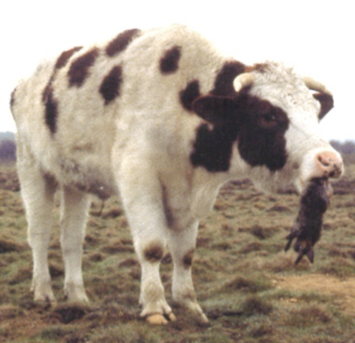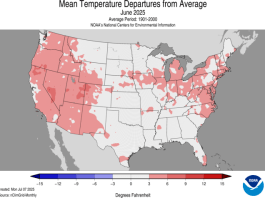From 1997 to 2002 I ran a research project to describe how to best use goats to reduce fire danger to homes and firefighters. I ran a herd that grew to 130 animals and used them to create firebreaks. We measured how quickly they could create breaks, monitored regrowth and regrazing timing, and then modeled fire behavior to see if the firebreaks could slow or stop wildfires. We learned a great deal about the usefulness of goats as a fire management tool. (You can read more about the project here.)
But as with all projects we learned things that we never set out to discover. One of these was a course in Johne’s disease.
How it Began
 In the fall of 2001, two six-year-old wethers in our herd began to lose weight. Pancho and Francisco seemed willing to eat, but unable to compete for a place at the feeder. To give them a better shot at the food, we put them in a pen with our “babies” – doelings and wethers who were about 9 months old. This turned out to be a critical error that many livestock producers make in the process of dealing with a disease that most have never heard of.
In the fall of 2001, two six-year-old wethers in our herd began to lose weight. Pancho and Francisco seemed willing to eat, but unable to compete for a place at the feeder. To give them a better shot at the food, we put them in a pen with our “babies” – doelings and wethers who were about 9 months old. This turned out to be a critical error that many livestock producers make in the process of dealing with a disease that most have never heard of.
They improved a bit, but then began to deteriorate again. They had no fever. They seemed interested in eating, but were extremely thin and they called to us when we came to feed each day. They began to have difficulty getting up and moved more and more slowly. We called the vet who took blood and fecal samples. Francisco’s stools were particularly loose and as he put the sample in the bag Dr. Hammon said, “I hope its not Johne’s. We had it in this pen years ago.”
The only thing I knew about Johne’s then was that it seemed to put fear into veterinarians. I guessed that it must be a very bad diagnosis. We isolated Pancho and Francisco in our sick barn, and watched the rest of the herd for symptoms. Pancho died on December 16 and Francisco followed him on December 17. We sent them both for necropsy, as required for our research project.
On New Year’s Eve afternoon, our project veterinarian called to let me know that cause of death for both animals was Johne’s. As required by law, the University clinician had notified the State veterinarian who was now awaiting our plan for dealing with the potential contamination of the entire herd. Possibilities ranged from a 2 year quarantine to “depopulation” of the herd, vet-speak for sending them all to slaughter. Tom Deliberto, the project veterinarian at the time, set up a meeting with another veterinarian and University staff for January 2 to discuss the future of my herd and the 35 does due to kid out in February and March.
Before the meeting, I spent hours on the Internet researching the disease and potential solutions. I found the web site for the Johne’s Information Center in Wisconsin to be the most helpful source of information. From it I learned the following about Johne’s:
The disease is also known as “paratuberculosis” because of the mycobacterium that causes it. Infected animals shed the mycobacterium in their feces at random times, but in highest quantities when they are sickest, just before death. Animals become infected by eating off the ground in areas contaminated with feces containing the mycobacterium. Young animals can also be infected through mother’s milk if the doe is shedding the mycobacterium. Johne’s is considered a “low-infectivity” organism because animals must ingest a large quantity before becoming infected. Young animals are very susceptible to contracting the disease, but older animals are unlikely to become infected unless they are housed in “feedlot” type conditions where the bacteria can be concentrated.

Over a period of years, the resulting infection scars the intestines of the animal until it can no longer absorb nutrition. The animal slowly dies of starvation. Generally, symptoms are nominal up to the point that the animal is so seriously ill that it will die shortly. Because animals do not appear sick, producers have no idea that the disease may be spreading through the herd. When animals become visibly sick, many producers make the mistake of increasing the risk to their herd by putting sick animals with younger animals where they will be better able to compete for food.
The disease is quite common in cattle dairy herds but less common in cow calf range operations where animals spend less time in close quarters. It is a global problem with 50% of the sheep in Australia and 30-40% of the dairy herds in the U.S infected. It can be transmitted to any ruminant. Potential risk to wildlife is minimal unless run off concentrates infected feces in their drinking supplies. Because the progression of the disease is similar to Crohn’s disease in humans, researchers have been exploring possible connections between the two diseases.
Containing the Spread
Dr. Becky Manning, Associate Scientist at the University of Wisconsin’s Johne’s Testing Center, called me back in response to my panicked e-mail for help. Though the diagnosis was bad, she assured me that the disease was containable. She encouraged me by describing dairies in Wisconsin that had survived the disease by focusing on minimizing transmission to the rest of the herd and testing for the disease to select infected animals for culling.
Dr. Manning made these suggestions for reducing transmission:
• Run-off flowing through contaminated pens can carry high concentrations of the mycobacterium. Prevent runoff from contaminating drinking and food supplies.
• It is unlikely that infectious quantities of the mycobacterium can be transported on boot bottoms by walking from pen to pen. Suiting up and boot scrubbing are not necessary. However, it would be rational for the persons going into the goat pens to change boots if they are going to subsequently care for young stock. In addition, equipment used to remove manure in the pens of potentially infected animals should be cleaned before using it in other pens.
• The organism is slow to die off. However, a dose on the ground can be too low to infect animals. Reduce risk by removing manure and disposing of it in a way that will not affect young stock.
• Disinfecting, if done, should be done with a phenyl based disinfectant. These do not work if they come in contact with dirt, so cleaning off dirt first is important.
• To clean dirt-floored pens where potentially infected animals were housed, remove several inches of the soil and replace it with clean fill.
How Bad is the Spread?

Based on what I was learning about the disease I began to figure out which animals might be infected. The only two animals known to be infected with Johne’s disease were part of the original herd of eleven wethers purchased in 1997. Because those animals had all been raised together as kids, the potential was higher that they were infected.
On the other hand, the does’ contact with wethers occurred at an age when they were less likely to be infected, and in housing conditions unlikely to spread the disease. In addition, the does never shared pasture, trailers or pens with either the infected animals or their herd mates. During winter, all does were kept in a separate pen and did not share concentrated living conditions with the wethers. They also had a special feeding set up that prevented fecal contamination. Based on the science it was highly unlikely they were infected.
A two year quarantine meant I could not continue field research and all funds would be expended on testing for the disease and housing and feeding the herd. In order to comply with the terms of my contract, I needed to complete my research, and I needed animals to be able to do that. My potential for success rested with the 32 pregnant does waiting to kid out in February and March.
I Meet With the University Staff
My goal for the meeting was to bring scientifically based information along with my herd management history so that together we could make a plan that would allow me to complete my project while also ensuring the disease did not spread.
I was stunned by the response of my colleagues at the meeting. In spite of the fact that they were all scientists, and they all agreed that everything we know about the disease said that the risk was minimal to some of my herd and other animals in the vicinity, they would not consider solutions other than destroying the entire herd. Still, I would not give up, and they finally agreed to let me quarantine the herd while I tested the does.
Determining the Extent of the Infection

With the help of the USU farm manager, I took blood samples from all 32 does. The AGID test returned negative for all of them. I sent fecal samples to the Johne’s Testing Center in Wisconsin for their rapid turn around fecal culture. Again, all tests returned negative. The quarantine remained in place, but I did receive agreement from the State Veterinarian and USU Vet staff that the does’ current negative status meant that it was highly unlikely that they could have passed the disease to their kids in utero. Nevertheless, the kids would be placed under the same two-year quarantine unless they were raised by hand without ever nursing from their mothers.
We developed a plan to do this. One of our largest obstacles was finding colostrum for the newborn kids. I was unwilling to use cow colostrum from local dairies because of the potential risk the dairy herd would have Johne’s. I could not locate any goat colostrum and even if I had, the risk remained that it might come from an infected herd. Unless I could eliminate all these risks, the kids would simply be born into quarantine. Eventually we found a supplier with powdered goat colostrum replacer that, in combination with Goat Serum, provided the kids with the nutrition and antibodies they needed to make a good start. A friend and her two children volunteered to help us and we set up a schedule that ensured someone was there to watch the goats at all times during kidding season. It was a lot of work, but a great success, and one of the few things that cheered us during the grim times that followed.
Read more here about how we hand-raised 60 kids, the early-weaning formula that made it possible, and what we learned along the way.
Here’s part two of the story:
What Happens When Johne’s Disease Appears in Your Herd? Part 2




